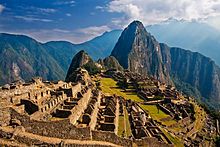Human Rights Abuses in US Terrorism Prosecutions (.pdf)
Human Rights Watch, Columbia Law School Human Rights Institute
July 2014
Terrorism entails horrifying acts, often resulting in terrible losses of human life. Governments have a duty under international human rights law to take reasonable measures to protect people within their jurisdictions from acts of violence. When crimes are committed, governments also have a duty to carry out impartial investigations, to identify those responsible, and to prosecute suspects before independent courts. These obligations require ensuring fairness and due process in investigations and prosecutions, as well as humane treatment of those in custody.
However, since the September 11, 2001 attacks on New York and Washington, DC, the United States government has failed to meet its international legal obligations with respect to its investigations and prosecutions of terrorism suspects, as well as its treatment of terrorism suspects in custory.
This has been true with regard to foreign terrorism suspects detained at the US military detention center at Guantanamo Bay, Cuba, most of whom are being held indefinitely without charge. And, as this report documents, it is also too often true with regard to American Muslim defendants investigated, tried, and convicted of terrorism or terrorism-related offenses in the US criminal justice system.
This report examines 27 such cases-from initiation of the investigations to sentencing and post-conviction conditions of confinement-and documents the significant human cost of certain counterterrorism practices, such as aggressive sting operations and unnecessarily restrictive conditions of confinement. Since the September 11 attacks, more than 500 individuals have been prosecuted in US federal courts for terrorism or related offenses-40 cases per year on average. Many prosecutions have properly targeted individuals engaged in planning or financing terror attacks. But many others have targeted individuals who do not appear to have been involved in terrorist plotting or financing at the time the government began to investigate them.
Indeed, in some cases the Federal Bureau of Investigation may have created terrorists out of law-abiding individuals by conducting sting operations that facilitated or invented the target’s willingness to act. According to multiple studies, nearly 50 percent of the more than 500 federal counterterrorism convictions resulted from informant-based cases; almost 30 percent of those cases were sting operations in which the informant played an active role in the underlying plot. In the case of the “Newburgh Four,” for example, a judge said the government “came up with the crime, provided the means, and removed all relevant obstacles,” and had, in the process, made a terrorist out of a man “whose buffoonery is positively Shakespearean in scope.”
In such instances, the government’s purpose appears to have been preventive: to root out and prosecute individuals it believes might eventually plan and carry out terrorism. To this end, it has substantially changed its approach, loosening regulations and standards governing the conduct of terrorism investigations.
While some of these cases involved foreign nationals and conduct overseas, or individuals who are not Muslim, many of the most high-profile terrorism prosecutions have focused on “homegrown” terrorist threats allegedly posed by American Muslims.
Human Rights Watch and Columbia Law School’s Human Rights Institute found that at times, in aggressively pursuing terrorism threats before they even materialize, US law enforcement overstepped its role by effectively participating in developing terrorism plots-in at least two cases even offering the defendants money to entice them to participate in the plot.
In theory, the defendants in these cases should be able to avoid criminal liability by making a claim of “entrapment.” However, US law requires that to prove entrapment a defendant show both that the government induced him to commit the act in question and that he was not “predisposed” to commit it. This predisposition inquiry focuses attention on the defendant’s background, opinions, beliefs, and reputation-in other words, not on the crime, but on the nature of the defendant. This character inquiry makes it exceptionally difficult for a defendant to succeed in raising the entrapment defense, particularly in the terrorism context, where inflammatory stereotypes and highly charged characterizations of Islam and foreigners often prevail. Indeed, no claim of entrapment has been successful in a US federal terrorism case to date. European human rights law-instructive for interpreting internationally recognized fair trial rights-suggests that the current formulation of the US defense of entrapment may not comport with fair trial standards.
Meanwhile, the law enforcement practices described in this report have alienated the very communities the government relies on most to report possible terrorist threats and diverted resources from other, more effective ways, of responding to the threat of terrorism. Its proclaimed success in convicting alleged terrorist conspirators has come with serious and unnecessary costs to the rights of many of those prosecuted and convicted, to their families and communities, to the public, and to the rule of law. Ultimately, these costs threaten to undermine the goal of preventing and effectively prosecuting and sanctioning terrorism crimes.
Our research explored cases from a chronological and geographic cross-section of the post-September 11 terrorism prosecutions. Cases spanned the months immediately after the September 11 attacks to more recent indictments, in order to explore which trends, if any, persisted or developed over time. We also sought cases from across the United States to examine the impact of such prosecutions on various American Muslim communities and to account for regional investigative and prosecutorial differences. Cases include prosecutions for material support and conspiracy, some resulting in sentences of more than 15 years or life imprisonment.
These cases do not constitute a representative sample that would allow us to generalize about all federal prosecutions, but they raise troubling questions about the fairness and effectiveness of many of the policies, practices, and tactics employed by the Federal Bureau of Investigation (FBI), the Justice Department, and the Bureau of Prisons in terrorism cases.
In some cases, the unfairness arises from the application of certain laws, some of which Congress greatly expanded after September 11, including material support laws, the Foreign Intelligence Surveillance Act, and the Classified Information Procedures Act.
Report: All But Four Of The High-Profile Domestic Terrorism Plots In The Last Decade Were Crafted From The Ground Up By The FBI
by Tim Cushing, Tech Dirt
Wed, Jul 23rd 2014
Human Rights Watch has just published a report containing the facts needed to back up everyone’s suspicions (.pdf) that the FBI counterterrorism efforts are almost solely composed of breaking up “plots” of its own design. And the bigger and more high-profile the “bust” was, the better the chance that FBI agents laid the foundation, constructed the walls… basically did everything but allow the devised plot to reach its designed conclusion.
…
Of those four exceptions, two (Boston Bombing/LAX shooting) were successfully pulled off. Feeling safer with the g-men’s increased focus on preventing terrorist attacks?Within the report is even more damning information that shows the FBI preyed on weak individuals in order to rack up “wins” in the War on Terror.
…
As much as the DHS and FBI have stated concerns about “radicalization” and domestic terrorism, those captured in FBI sting operations were strongly pushed in that direction by informants and undercover agents. The FBI created threats where none existed.
…
This sort of activity should have been treated as “own goals” by the agency and some of the more credulous press. Instead, these busts are touted as evidence of the agency’s superior skill and effort, something more closely related to extolling the prowess of someone who has just scored on an empty net.The FBI took a man whose main hobbies were “watching cartoons” and “playing Pokemon,” a man who a forensic psychologist described (during the trial) as “highly susceptible to the suggestions of others” and fashioned him into a supposed terrorist. The planned subway bombing never happened, thanks to the FBI’s keenly-honed ability to capture terrorists it created. Arrested with the would-be subway bomber was his “co-conspirator,” a high school dropout with drug problems and clinically-diagnosed paranoid schizophrenia.
…
There’s nothing to celebrate about victories like these. The emphasis on creating plots just to shut them down diverts resources from actual threats — ones arising without huge amounts of FBI prompting. All this does is ensure the agency’s anti-terror funding remains intact — money that will be largely wasted on the FBI’s sting operation Ouroboros. And while the FBI plays with its terrorist dress-up dolls, the real threats will go undetected.






Recent Comments